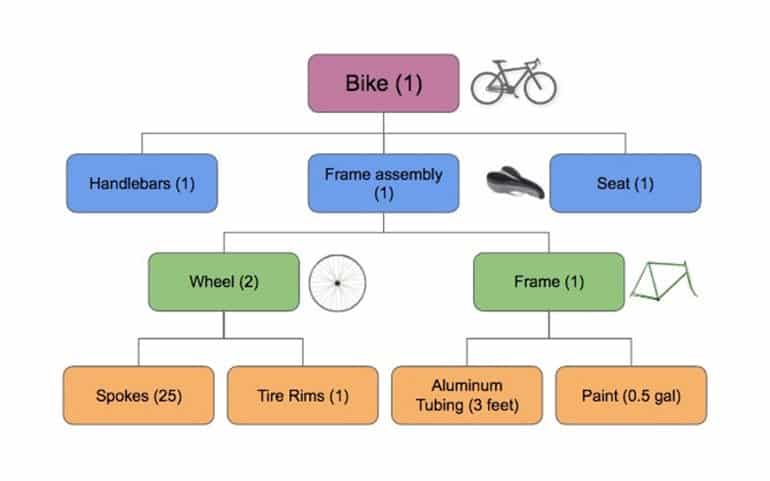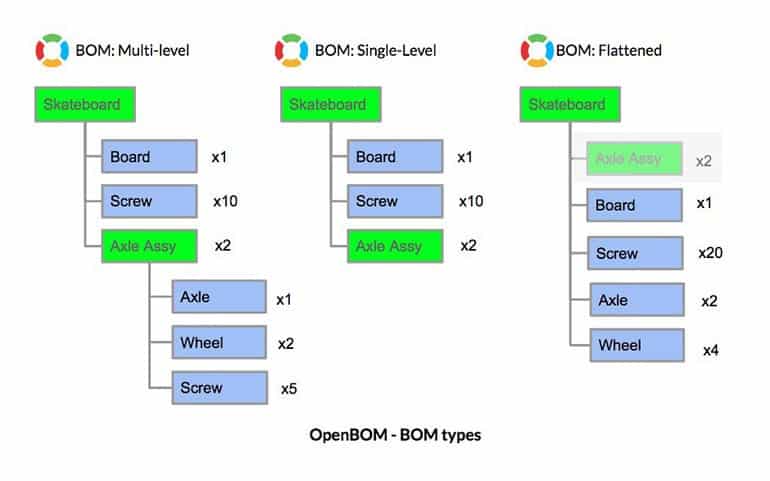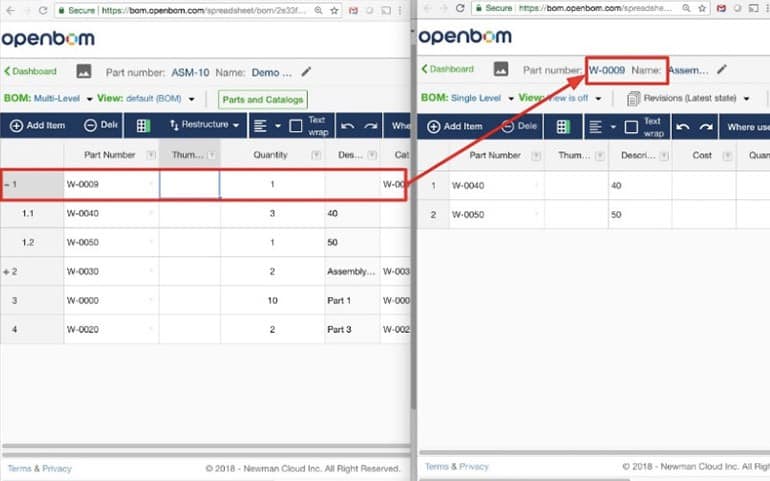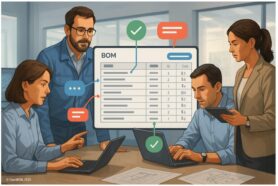
One of the most frequently asked questions about OpenBOM is related to multi-level BOM. Does OpenBOM actually support hierarchical multi-level structures? How to create a hierarchical view in the Bill of Materials? I’m not surprised. Hierarchical structures are not very natural for spreadsheets. Since OpenBOM is so much looking and feeling like Excel, then how to create nested structures of multi-level Bill of Materials.
We need to work harder on explanations and, as you can see on our new homepage, we provide this information loud and clear. But I want to work harder on the problem of multi-level BOMs and give you handier step-by-step instructions.
In this blog, I will speak about 3 types of BOM, how to create multi-level structure and benefits of granular level access in OpenBOM.
Three types of BOM
OpenBOM has 3 embedded BOM types: 1) Multi-level; 2) Single-level and 4) Flattened.
While the first two are clear, flattened BOM is sometimes confusing. Think of a flattened BOM as a list of all the parts from all levels of your BOM listed together and aggregate total quantities for each part shown.
It’s a great way to see the quantities of ALL parts (no matter what level of the BOM they appear) with their summed quantities. Flattened only makes sense for a multi-level BOM.
The following picture can give you an idea about what it is:

How to create multi-level BOM manually
OpenBOM granular data management tools allow you to create multi-level BOM by pieces top down and bottom up.
Check the following screenshot. It shows two BOMs. On the left, you can see top-level BOM (ASM-10). On the right, you can see sub-level BOM with Part Number (W-0009). By manually editing Part Numbers, you can connect any structures of product information in OpenBOM into multi-level hierarchical structures.
Benefits of granular BOM levels
You can ask why each BOM is represented in OpenBOM as an independent single level. If you navigate to All BOM in OpenBOM dashboard, you can actually see all these BOMs there. It can give you a way to design data properties for each level independently.
The greatest benefit is when you’re building a multi-disciplinary BOM. Think about the device that has some mechanical enclosure designed in Solidworks, uses a PCB board designed in Altium, and also includes some embedded software. Getting an entire structure of product requires a more flexible data structure rather than a homogeneous BOM tree. This is a place where OpenBOM can give you a very unique value allowing to create granularly each level and automatically connect all of them together.
Conclusion
OpenBOM looks simple like Excel spreadsheet, but it is a sophisticated and powerful database engine to handle hierarchies of BOMs and relationships. While levels are connected automatically, OpenBOM can have an individual set of properties for each level. The last one is super important if you need to create a multi-disciplinary BOM structure combining mechanical, electronic, and software BOMs.
Try OpenBOM today and subscribe to FREE user subscription now to build you first multi-level BOM using OpenBOM.
Best, Oleg
Join our newsletter to receive a weekly portion of news, articles, and tips about OpenBOM and our community.










